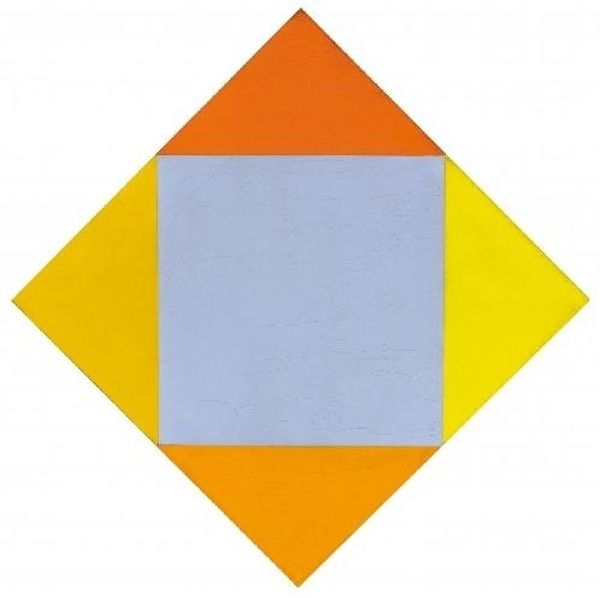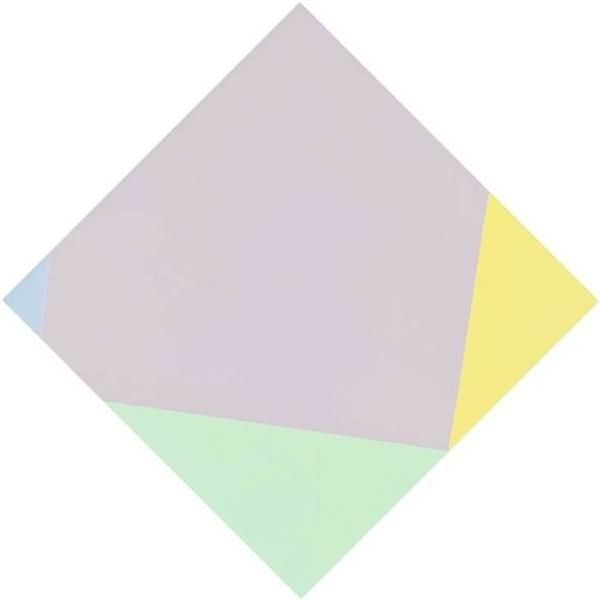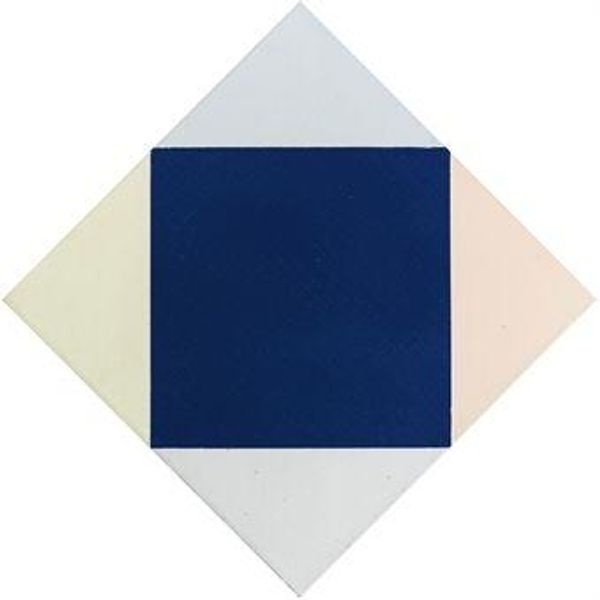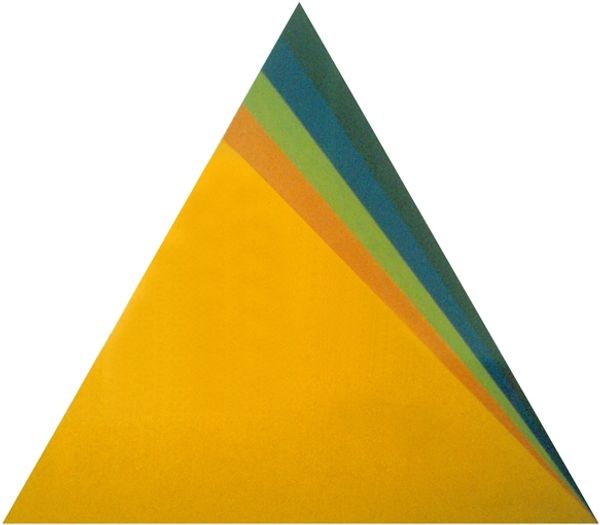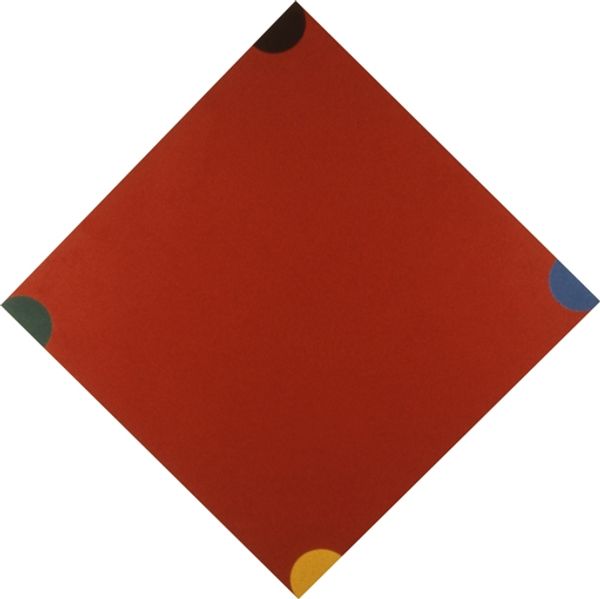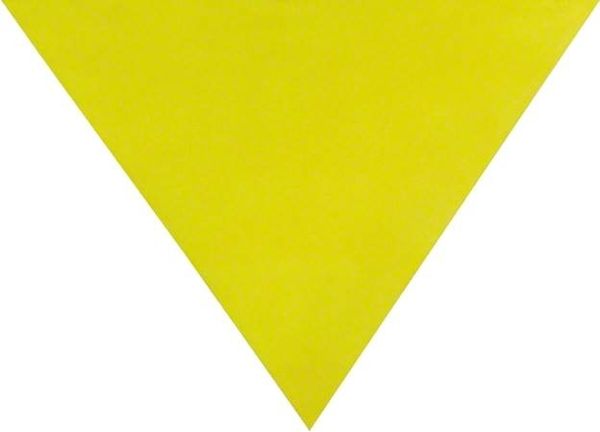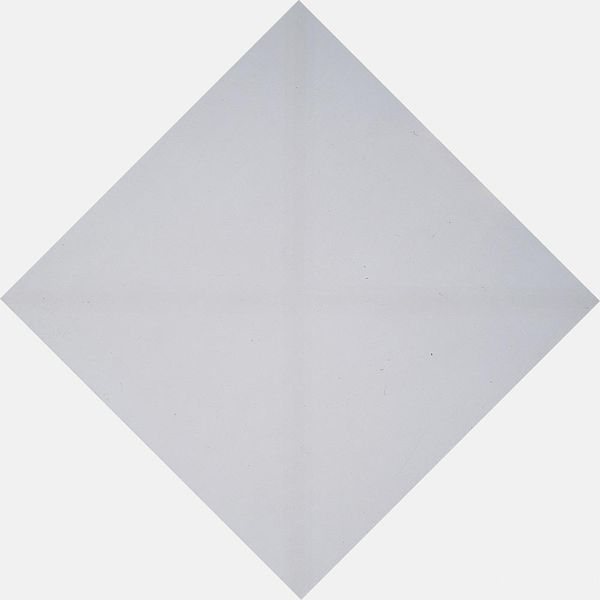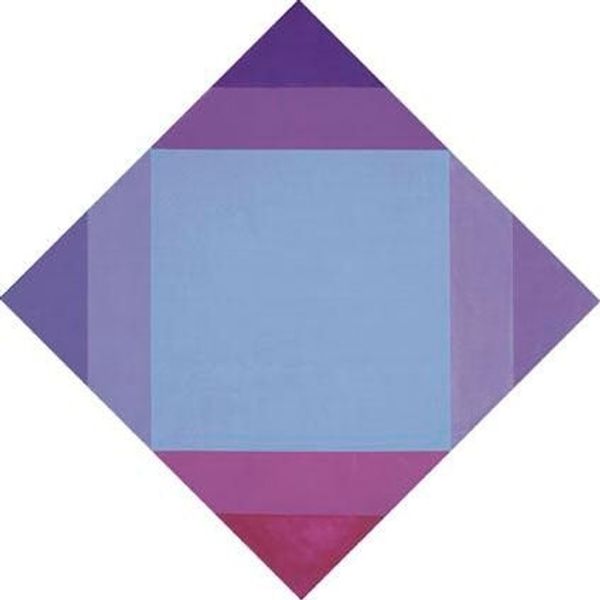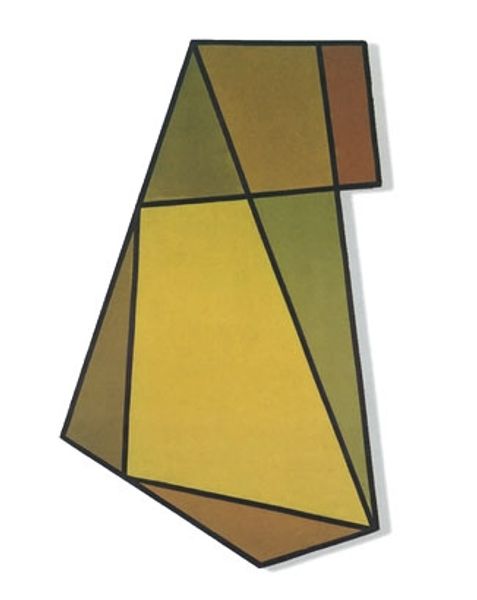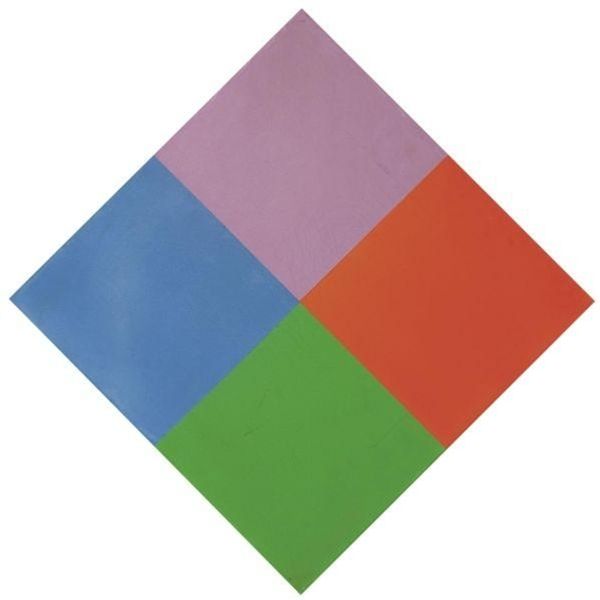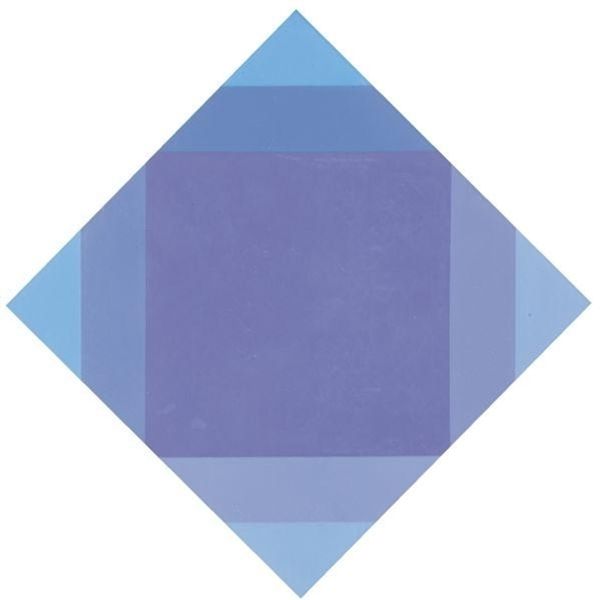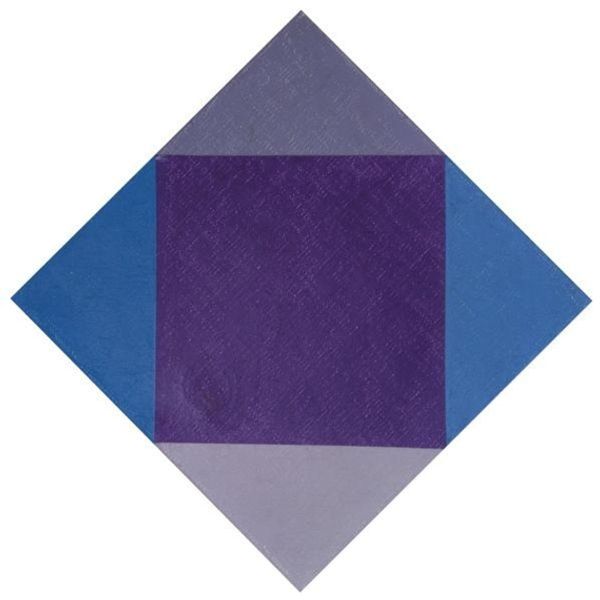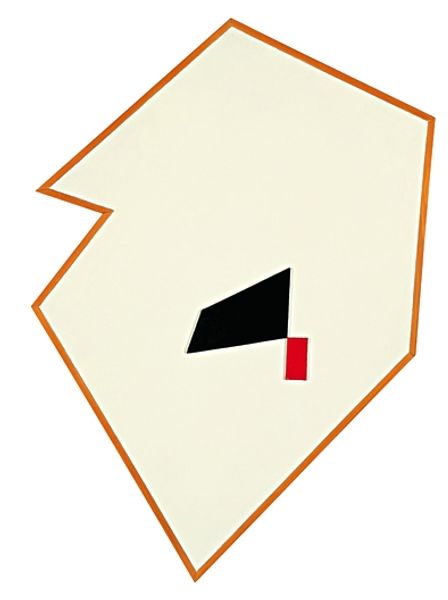
acrylic-paint
#
concrete-art
#
op art
#
acrylic-paint
#
form
#
geometric pattern
#
geometric-abstraction
#
abstraction
#
line
#
modernism
#
hard-edge-painting
Copyright: Max Bill,Fair Use
Editor: Here we have "Verwanderte eikon des weissen quadrates," which translates to "Transmuted Icon of the White Square," created by Max Bill in 1969, using acrylic paint. The bold geometric shapes give me a sense of…almost industrial precision. What’s your take on it? Curator: Focusing on the means of production, let's consider acrylic paint in 1969. It represented a shift away from traditional oil paints, democratizing art-making due to its affordability and ease of use. How does this mass-producible medium challenge our notions of "high art" versus craft, especially within geometric abstraction? Editor: That’s a great point, I hadn’t considered the accessibility aspect. So the choice of acrylic, rather than oil, speaks to a larger shift in artistic production itself? Curator: Precisely. Bill's work, situated within Concrete Art, utilized geometry not just for aesthetic purposes but to investigate the relationship between artistic labor, material production, and a rapidly changing social context. What happens to the “aura” of a painting, in Walter Benjamin’s terms, when its materiality suggests mass production? Editor: It kind of deflates the idea of the artist as a solitary genius, maybe? The focus shifts to the system of production, the availability of materials. It also makes me wonder, does the geometry here speak to an idea of industrial design too, and functional production? Curator: Exactly! We see form responding to function beyond artistic interpretation. Perhaps consumption, not just contemplation, is also enacted. This work invites us to ponder the interconnectedness of art, industry, and society. Editor: I never would have considered the materials themselves so central to the meaning of the work. Now I’m going to view materiality much more analytically. Curator: Glad to have assisted, paying closer attention to materiality changes everything.
Comments
No comments
Be the first to comment and join the conversation on the ultimate creative platform.
